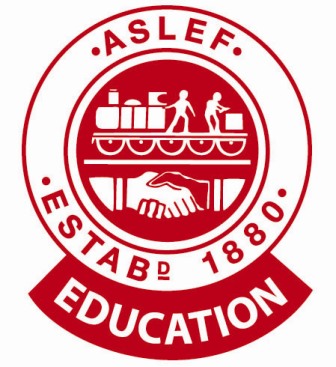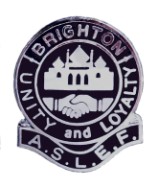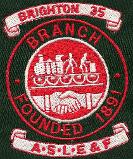
IGNITING THE SUSSEX BEACONS
OF UNITY
THE HISTORY OF THE
SUSSEX BRANCHES OF A.S.L.E.F.
EVERY PICTURE TELLS A STORY
 | One of the main reasons for doing these web sites is to try and explain to everybody the history of the footplate grades, the conditions they had to work in and the creation of the A.S.L.E.F. branches within the Brighton & Sussex area. I am therefore very grateful for people sending me personal photos from their personal collection and for allowing me to display them on the web sites. But unfortunately what is missing, are the stories that accompany them. What I want to do is to try and remedy this by starting to record the remaining stories that are still out there, before they too are lost in the midst of time. I have added some information about some of the drivers that I know and the comments that have already have been sent to me. If you too have any stories about your own working life on the footplate, the people that you worked with and the conditions you had to work in please send me and I will post, on the web site. If you are interested in helping me in capturing these stories by any means possible please let me know. |
BUFFER STOPCOLISION
EASTBOURNE STATION
15th JANUARY 1905
INVOLVING DRIVER ROBERT BARBER
AND HIS FIREMAN JOHN BEIGNET
A collision occurred on the 15th January 1905, at about 8.45 pm. at Eastbourne Station, between a passenger train and the buffer stops. In this case, as the 8.5 p.m. up passenger train from Hastings, consisting of an engine, tender and 12 vehicles, was entering Eastbourne Station on No. 3 platform line, it failed to stop at the usual point and came into collision with the buffer stops at the end of that line.
The speed of the train at the time of the collision was not great, so the shock was not a very severe one, but six passengers have notified the Company of personal injuries sustained; it is understood however that none of these are of a very serious nature. Two guards who were on the train at the time were also slightly injured.
The engine of the train was a four wheels-coupled tender engine, running chimney first; it was fitted with the Westinghouse automatic brake, working blocks on the four coupled wheels nd on the tender wheels, and with a hand brake working on the blocks on the tender wheels. The two leading vehicles of the train were considerably damaged, and nine of the remainder were slightly injured.
The vehicles of the train were all fitted with the Westinghouse automatic brake working on all the wheels of the eight-wheeled stock, and on four wheels of each of the remainder. All the brakes ae reported as having been in good order.
DESCRIPTION
Eastbourne Station, where: this accident occurred, is a terminal station lying approximately east and west, the buffer stops being at the west end.
The station is provided with two platforms, each of which accommodates two platform lines, but the only line connected with this accident is No. 3 platform line, which lies on the south side of the north platform. The length of this platform from its east end to the buffer stops is 600 feet. The platform line is signalled for both arrival and departure, being provided with connections lending to both the up and the down lines.
On the south side of No. 3 platform line is a siding, and at a short distance from the buffer stops there is on the platform line a trailing connection leading to this siding, this connection being used to enable an engine to run round its train. The distance from the east end of the platform to the fouling point of this connection is 423 feet, and the distance from the buffer stops to the same point is 175 feet.
The station signal-box is situated on the south side of the line at a short distance to east end of the station.
EVIDENCE
Robert Barber, driver, states: I have been 34 years in the service of the Company, during 28 years of which I have been employed as driver. I was on duty on the 15th January at 8.25 a.m. to work till 1.30 p.m.; I came on duty again at 5.30 p.m. to work till about 1.30 a.m. I came off duty on the 14th January about 6.10 pm. On the evening of the 15th January I was in charge of the 8.5 p.m. train from Hastings to Eastbourne and then from Eastbourne to London. My engine was fitted with the Westinghouse automatic brake working blocks on the four coupled wheels and on the tender wheels and with a hand brake working blocks on the tender wheels; my brake was in good order. I had


